 |
How a flipping crab led researchers to discover that a commercially harvested species feeds at methane seeps |
Researchers have documented a group of tanner crabs vigorously feeding at a methane seep on the seafloor off British Columbia – one of the first times a commercially harvested species has been seen using this energy source. |
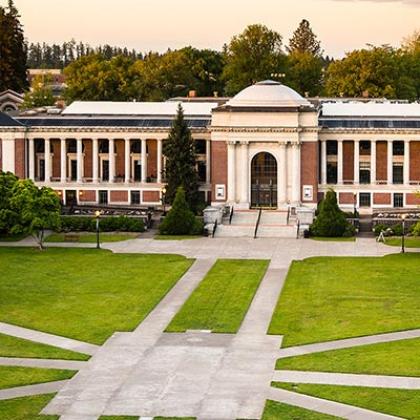 |
OSU alumnus Warren Washington to receive prestigious Tyler Prize for pioneering climate studies |
Pioneering climate scientist Warren Washington, who received his bachelor and master’s degrees from Oregon State University, has been named co-recipient of the 2019 Tyler Prize for Environmental Achievement. |
 |
Study finds Oregon’s unique “resident” gray whales actually move around quite a bit |
A new study found that Oregon's population of "resident" gray whales actually travels quite a bit, though they have strong preferences for certain locations. |
 |
Mosquitoes that carry malaria may have been doing so 100 million years ago |
The anopheline mosquitoes that carry malaria were present 100 million years ago, new research shows, potentially shedding fresh light on the history of a disease that continues to kill more than 400,000 people annually. |
 |
Study finds experimental extreme draining of reservoir has unexpected ecological impacts |
The experimental extreme draining of a reservoir in Oregon to aid downstream migration of juvenile chinook salmon is showing benefits but also a mix of unintended consequences, including changing the aquatic food web and releasing potential predators downstream. |
 |
Climate modeling shows significant shifts in 21st century Pacific Northwest coastal forest vegetation |
A changing climate in the 21st century will significantly alter the coastal forests of the Pacific Northwest, according to modeling by Oregon State University researchers. |
 |
NW Forest Plan 25 years later: Wildfire losses up, bird populations down |
Twenty-five years into a 100-year federal strategy to protect older forests in the Pacific Northwest, forest losses to wildfire are up and declines in bird populations have not been reversed, new research shows. |
 |
Research showcase highlights work of engineering graduate students |
Want to learn more about the Oregon State University College of Engineering’s far-ranging research efforts, including asking questions of those conducting the research? The college’s sixth annual Graduate Research Showcase provides that opportunity. |
 |
Climate report: Warming taking its toll on Oregon |
The changing climate is having a significant impact on Oregon, a new report concludes, with the state growing progressively warmer, experiencing more severe wildfires, and undergoing a shift of seasons resulting in less snowpack and lower summer stream flows. |
 |
Blend of warmer water, chemical exposure influence gene expression across generations in a coastal fish |
Warmer water temperatures, combined with low-level exposure to chemicals, influence the expression of genes in the offspring of an abundant North American fish species. |
 |
Direct killing by humans pushing Earth’s biggest fauna toward extinction |
One hundred forty-three species of large animals are decreasing in number and 171 are under threat of extinction, according to new research that suggests humans’ meat consumption habits are primarily to blame. |
 |
Proton transport ‘highway’ may pave way to better high-power batteries |
Researchers have found that a chemical mechanism first described more than two centuries ago holds the potential to revolutionize energy storage for high-power applications like vehicles or electrical grids. |
 |
Trout, salamander populations able to quickly bounce back from severe drought conditions |
Populations of coastal cutthroat trout and coastal giant salamanders in the Pacific Northwest show the ability to rebound quickly from drought conditions, new research by Oregon State University suggests. |
 |
‘Silent slip’ along fault line serves as prelude to big earthquakes, research suggests |
Big earthquakes appear to follow a brief episode of “shallow mantle creep” and “seismic swarms,” suggests new research at Oregon State University that offers an explanation for the foreshocks observed prior to large temblors. |
 |
Alaska’s ‘outdated’ management plan increases risks to large carnivores, ecosystems, scientists say |
Alaskan wildlife management that prioritizes reducing bear and wolf populations so hunters can kill more moose, caribou and deer is both backward and lacks scientific monitoring, ecologists say. |
 |
Far-ranging fin whales find year-round residence in Gulf of California |
Researchers from Mexico and the United States have concluded that a population of fin whales in the rich Gulf of California ecosystem may live there year-round – an unusual circumstance for a whale species known to migrate across ocean basins. |
 |
Sample of rescued dogs shows link between gut microbiome, aggressiveness |
A groundbreaking study of more than two dozen rescued dogs, some aggressive and some not, showed a clear link between aggressive behavior and the microbes that live in the dogs’ guts. |
 |
Metabolic syndrome patients need more vitamin C to break cycle of antioxidant depletion |
A higher intake of vitamin C is crucial for metabolic syndrome patients trying to halt a potentially deadly cycle of antioxidant disruption and health-related problems, an Oregon State University researcher says. |
 |
Slime proves valuable in developing method for counting salmon in Alaska |
Scientists have published a novel method for counting Pacific salmon – analyzing DNA from the slime the fish leave behind in their spawning streams. |
 |
Reducing drinking could help with smoking cessation, research finds |
If quitting smoking is one of your New Year’s resolutions, you might want to consider cutting back on your drinking, too. |
 |
Trees’ enemies help tropical forests maintain their biodiversity, study finds |
Scientists have long struggled to explain how tropical forests can maintain their staggering diversity of trees without having a handful of species take over – or having many other species die out. The answer, researchers say, lies in the soil found near individual trees, where natural “enemies” of tree species reside. These enemies, including fungi and arthropods, attack and kill many of the seeds and seedlings near the host tree, preventing local recruitment of trees of that same species. |
 |
Tree-ring analysis explains physiology behind drought intolerance brought on by fire suppression |
Tree rings tell the story of what’s happening physiologically as fire suppression makes forests more dense and less tolerant of drought, pests and wildfires, new research shows. |
 |
Researchers to use artificial intelligence, “big data” to locate and predict crime at sea |
Researchers using artificial intelligence and “big data” plan to develop new algorithms that they say will enable them to identify, locate – and eventually predict – crimes committed in the world’s oceans, from illegal fishing off the Patagonia shelf to drug smuggling in Central America to slave labor and human trafficking in the Indian Ocean. |
 |
Climate change anomaly intensifies Swiss needle cast in some Douglas-fir forests |
The fungal disease reacts favorably to the wet, foggy environment on the west slope of the Oregon Coast Range. |
 |
Machine-learning research at OSU unlocking molecular cages’ energy-saving potential |
Nanosized cages may play a big role in reducing energy consumption in science and industry, and machine-learning research at Oregon State University aims to accelerate the deployment of these remarkable molecules. |
 |
50 years ago, OSU grad introduced the computer mouse and the world hasn’t been the same since |
Fifty years ago this week, a quiet engineer, who had graduated from Oregon State University, introduced the world to windows, hypertext, video conferencing, computer graphics and the computer mouse – the latter a wooden block on wheels – years before they advanced daily business and consumer processes. . |
 |
Hazelnuts improve older adults’ micronutrient levels |
Older adults who added hazelnuts to their diet for a few months significantly improved their levels of two key micronutrients, new research at Oregon State University indicates. |
 |
Three Oregon State University researchers earn rank of AAAS fellow |
The American Association for the Advancement of Science has awarded the distinction of AAAS fellow to three researchers from Oregon State University: Michael Freitag, David Maddison and Mas Subramanian. |
 |
Study: Earth’s polar regions communicate via oceanic “postcards,” atmospheric “text messages” |
Scientists have documented a two-part climatic connection between the North Atlantic Ocean and Antarctica, a fast atmospheric channel and a much slower oceanic one, that caused rapid changes in climate during the last ice age – and may again. |
 |
Mosquitoes, other blood-sucking flies have been spreading malaria for up to 100 million years |
The microorganisms that cause malaria, leishmaniasis and a variety of other illnesses today can be traced back at least to the time of dinosaurs, a study of amber-preserved blood-sucking insects and ticks show. |
 |
OSU scientists assisted in planning for Mars InSight landing |
OSU scientist Jeffrey Barnes and colleagues helped NASA scientists and engineers plan for the tricky landing of Mars InSight, and have been involved with the Mars 2020 mission as well. |
 |
New federal report: Northwest climate could see more years like 2015 |
A new federal report on the impacts of climate change release on Friday – that includes a chapter focusing on the Pacific Northwest – warns that more years like 2015 may lie ahead for the region and they may be even worse. |
 |
Mucus from frogs’ sticky tongues may jump-start next generation of high-tech adhesives |
The next generation of high-tech adhesives could take some design cues from the tongues of frogs, according to new research led by the Oregon State University College of Engineering. |
 |
Corals and their microbiomes evolved together, new research shows |
Corals and the microbes they host evolved together, new research by Oregon State University shows. |
 |
Discovery of a new gene could shed light on chemical exposure effects in humans |
The discovery of a new gene in zebrafish could lead to a better understanding of how exposure to chemicals leads to disease in humans. |
 |
Response to daily stressors could affect brain health in older adults |
Taking typical daily annoyances such as a long wait at the doctor’s office or a traffic jam on the freeway in stride may help preserve brain health in older adults, while emotional reactions could contribute to declines in cognition. |
 |
PNW forests will be less vulnerable to drought, fire than Rocky Mountain, Sierra forests |
Forests in the Pacific Northwest will be less vulnerable to drought and fire over the next three decades than those in the Rocky Mountains and Sierra Nevada, computer modeling by researchers in Oregon State University’s College of Forestry shows. |
 |
Researchers identify factors behind small-intestine inflammation in immunodeficiency patients |
Oregon State University researchers have discovered two key factors behind the intestinal inflammation that plagues people suffering from a disorder that affects their immune system. |
 |
Yellowstone streams recovering thanks to wolf reintroduction |
In the first study of its kind, research by Oregon State University scientists shows that the return of large terrestrial carnivores can lead to improved stream structure and function. |
 |
Researchers closer to gonorrhea vaccine after exhaustive analysis of proteins |
In a study of proteins historic in its scope, researchers have pushed closer both to a vaccine for gonorrhea and toward understanding why the bacteria that cause the disease are so good at fending off antimicrobial drugs. |
 |
Construction starts on research ship to be operated by Oregon State University |
Construction of a new Oregon State University-bound research ship that will advance the science of coastal environments, and support research on topics such as ocean acidification, hypoxia, and sea level rise, officially began today in Louisiana. |
 |
OSU analysis finds countries following through on ocean conservation promises |
Nations and organizations have taken action on nearly all of their recent ocean conservation pledges and almost half of those promises have been fulfilled, research by Oregon State University shows. |
 |
Solar arrays could be used as resources for plant productivity, study shows |
Oregon State University scientists have found a resource to increase agricultural production on dry, unirrigated farmland—solar panels. |
 |
OSU a leader in national effort to ensure science strives for tangible, positive effects on society |
Oregon State University is helping to spearhead a $5.2 million National Science Foundation effort toward ensuring that research projects make tangible, positive impacts on society. |
 |
OSU helps establish roadmap for filling the gaps in forest pollinator research |
Actively managed conifer forests may also provide important habitat for the pollinators that aid in the reproduction of food crops and other flowering plants around the globe. |
 |
Animal species becoming extinct in Haiti as deforestation nearly complete |
Species of reptiles, amphibians and other vertebrates are becoming extinct in Haiti as deforestation has claimed more than 99 percent of the country’s original wooded areas. |
 |
Genetic behavior reveals cause of death in poplars essential to ecosystems, industry |
Scientists studying the valuable, but vulnerable, black cottonwood poplar have identified the genetic mechanism responsible for the species’ inability to resist a pervasive and deadly disease. |
 |
Noted OSU conservation researcher to speak at Science Pub Nov. 12 |
William Ripple, a distinguished professor in the College of Forestry at Oregon State University who has drawn worldwide attention for his research on wolves and other predators, and for publishing a scientists’ warning to humanity, will speak at the Corvallis Science Pub on Monday, Nov. 12. |
 |
Sidebar: Floating glass, plastic reveal new red algal genera and species, possibly from tsunami |
An Oregon State University researcher analyzing debris from the 2011 Japanese tsunami has discovered two new species of red algae – one that attaches to plastic debris, the other is found only on glass. |
 |
Algae from Japanese tsunami debris hasn’t taken a foothold, though many were “global invaders” |
Researchers have identified 84 species of marine algae and cyanobacteria that arrived in the Northwest via debris from the 2011 Tohoku earthquake and tsunami and, to date, none have gained a foothold in U.S. coastal waters. |
 |
Researchers discover deepest known underwater volcanic eruption |
A team of researchers has documented a recent volcanic eruption on the Mariana back-arc in the western Pacific Ocean that is about 2.8 miles below the ocean surface, making it the deepest known eruption on Earth. |
 |
OSU researchers propose CRISPR as influencer of low genetic diversity in deadly bacteria |
Scientists at Oregon State University have shed light on the evolutionary history of a soil-borne bacteria that is so dangerous to grazing animals it is kept behind lock-and-key to prevent its spread. |
 |
Oregon State names interim vice president for research |
Oregon State University President Ed Ray Wednesday named Irem Tumer as interim vice president for research. |
 |
For a small segment of fans, sports consumption can be compulsive and potentially harmful |
For a small percentage of the most avid fans, sports consumption may also be compulsive and potentially harmful, much the way that compulsive shopping, tanning or use of social media can be to some people, new research from Oregon State University shows. |
 |
Economic analysis provides watershed moment for environmental groups |
Economists have found that in the United States, watershed groups have had a positive impact on their local water quality. |
 |
OSU advancing disease understanding, diagnosis through use of big data |
Patients are now being more precisely diagnosed and treated thanks to an Oregon State University researcher’s work in translational data science. |
 |
Study leads to a question: Should the fishing industry insure itself against risk? |
Oregon State University’s James Watson, an assistant professor who specializes in marine resource management, published a study this week in which he and others outlined the need for aquaculture producers in developing countries to use financial risk management tools to protect their investment. |
 |
Cities’ population, transportation patterns affect how flu epidemics play out |
The more people a city has and the more organized its residents’ movement patterns, the longer its flu season is apt to last, new research at Oregon State University shows. |
 |
2018 one of worst low-oxygen years for ocean off Oregon, which now has a “hypoxia season” |
Oregon State University recently received a four-year, $1.1 million grant from the NOAA Coastal Hypoxia Research Program to work with Oregon Department of Fish and Wildlife, crabbers and other fishermen to map and track the extent of the hypoxia, identify “hotspots” and potential refuge areas, and develop predictive models of when and where low oxygen will occur – and affect Dungeness crabs and fishes. |
 |
Researchers identify potential new anti-cancer target: A microbe that helps cancer spread |
Oregon State University researchers studying cervical cancer have identified a bacterium that helps the disease spread, a discovery that could open up a new way of treating cervical and other cancers. |
 |
Manta rays’ food-capturing mechanism may hold key to better filtration systems |
Manta rays strain their tiny food from mouthfuls of seawater in a novel way that could hold the key to better filtration in a variety of commercial applications, new research by Oregon State University shows. |
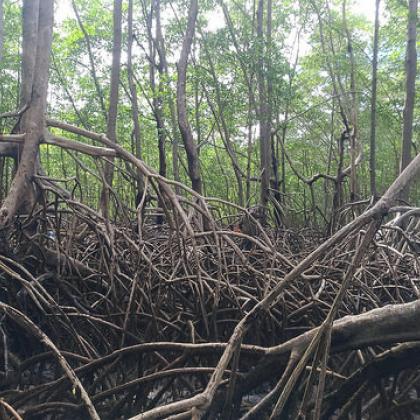 |
Amazon mangrove forest stores twice as much carbon per acre as region’s famous rainforest |
Scientists have determined for the first time that Amazon’s waterlogged coastal mangrove forests, which are being clear cut for cattle pastures and shrimp ponds, store significantly more carbon per acre than the region’s famous rainforest. |
 |
Seafood/fishing industry alerted scientists to acidification, hypoxia issues off Oregon |
The first biannual report to the Oregon Legislature from the Ocean Acidification and Hypoxia Coordinating Council concludes that the state needs more monitoring, public awareness and policy direction regarding these emerging ocean conditions. |
 |
Community college and high school students to spend four days on OSU research vessel |
Oregon high school and community college students and teachers will join Oregon State University scientists on the research vessel Oceanus this month to gain at-sea research experience as part of a project to enhance STEM (science, technology, engineering and math) skills. |
 |
Gut microbes’ role in mammals’ evolution starts to become clearer |
An international collaboration led by Oregon State University scientists has made a key advance toward understanding which of the trillions of gut microbes may play important roles in how humans and other mammals evolve. |
 |
Study: Unmanned “drones” give scientists new insights into gray whale behavior |
Scientists using drones have discovered new behaviors by gray whales off the West Coast, including headstands and swimming upside down. |
 |
Oregon State to host robotics and artificial intelligence symposium |
Oregon State University will culminate the 15-month celebration of its 150th anniversary with a daylong symposium on how artificial intelligence and robotics may change society, jobs and the economy. |
 |
Oregon State University has another blockbuster year in research grants and contracts |
Oregon State University announced Tuesday that it recorded its second-best year ever in competitive grants and contracts for research that benefits every corner of the state and provides students with opportunities for hands-on experience. |
 |
New imagery solves mystery of why Mount St. Helens is out of line with other volcanoes |
Some of the clearest, most comprehensive images of the top several miles of the Earth’s crust have helped scientists solve the mystery of why Mount St. Helens is located outside the main line of the Cascade Arc of volcanoes. |
 |
Aspen is making a comeback in and around Yellowstone National Park, because of predators |
The reintroduction of wolves into Yellowstone National Park is tied to the recovery of aspen in areas around the park, according to a new study. |
 |
OSU to name new research ship Taani, which means “offshore” |
The first new Regional Class Research Vessel being constructed with funds from the National Science Foundation to bolster the nation’s aging U.S. Academic Research Fleet now has a name: Taani. |
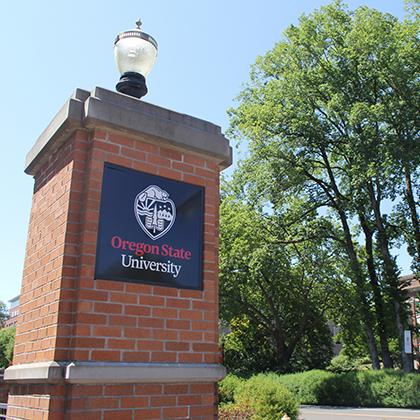 |
Could religious freedom provide a shield for corporations supporting undocumented immigrants? |
The Religious Freedom Restoration Act could provide a shield for liberal businesses seeking to support undocumented immigrants, much the same way the law has allowed conservative companies to challenge enforcement of health care and anti-discrimination laws, a researcher from Oregon State University suggests in a new paper. |
 |
Adults play a key role in children’s participation in school recess, researchers suggest |
When adults are participants in school recess – leading games, monitoring play and ensuring conflicts are mediated quickly – children are more likely to be engaged in recess activities, a new study has found. |
 |
New ‘droughty’ soils model for Pacific Northwest could aid forest health in changing climate |
Scientists have developed a new approach to modeling potentially drought-prone soils in Pacific Northwest forests, which could aid natural resource managers to prepare forested landscapes for a changing climate. |
 |
Logging site slash removal may be boon for wild bees in managed forests |
New research suggests the removal of timber harvest residue during harvesting may be a boon for wild bees, an important step toward better understanding the planet’s top group of pollinators. |
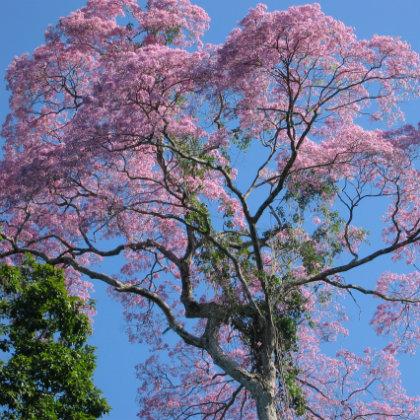 |
Logging permit fraud threatens timber species in Brazilian Amazon |
Timber harvested illegally under fraudulent permits is undercutting conservation efforts in the Brazilian Amazon, new research by an international collaboration shows. |
 |
Scientists trace atmospheric rise in CO2 during deglaciation to deep Pacific Ocean |
A new study provides some of the most compelling evidence for how carbon dioxide rose during the last deglaciation – a “flushing” of the deep Pacific Ocean caused by the acceleration of water circulation patterns that begin around Antarctica. |
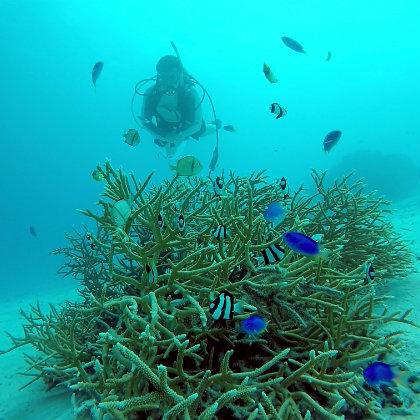 |
Corals and algae go back further than previously thought, all the way to Jurassic Period |
Algae and corals have been leaning on each other since dinosaurs roamed the earth, much longer than had been previously thought. |
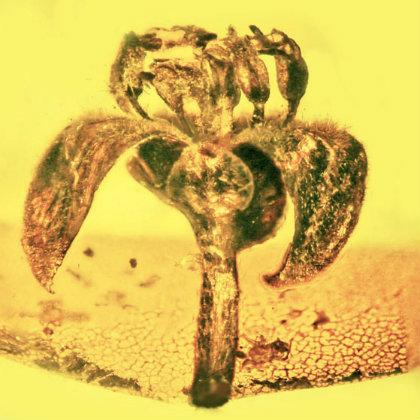 |
Those fragrances you enjoy? Dinosaurs liked them first |
The compounds behind the perfumes and colognes you enjoy have been eliciting olfactory excitement since dinosaurs walked the Earth. |
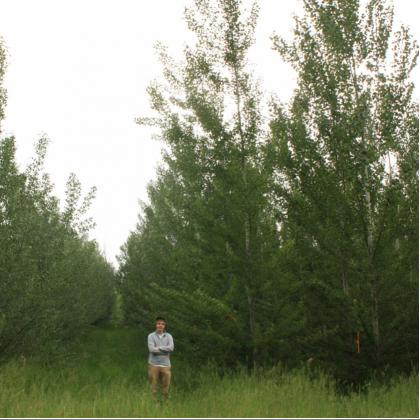 |
Groundbreaking poplar study shows trees can be genetically engineered not to spread |
The largest field-based study of genetically modified forest trees ever conducted has demonstrated that genetic engineering can prevent new seedlings from establishing. |
 |
Research finds quakes can systematically trigger other ones on opposite side of Earth |
New research shows that a big earthquake can not only cause other quakes, but large ones, and on the opposite side of the Earth. |
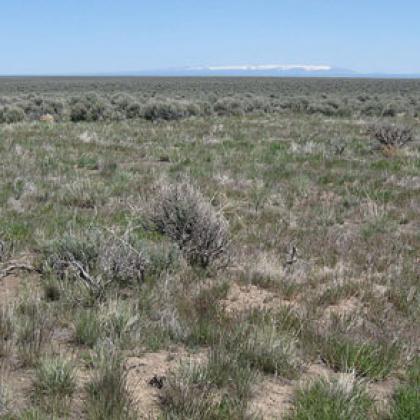 |
Fire is not all bad news in healthy sagebrush steppe ecosystems |
Fire is not all bad news in healthy sagebrush steppe ecosystems, according to an Oregon State University study. |
 |
Kissing up to the boss can increase employees’ bad behavior in the workplace, study shows |
Kissing up to the boss at work may help boost employees’ careers but it also depletes the employees’ self-control resources, leaving them more susceptible to behaving badly in the workplace, a new study has found. |
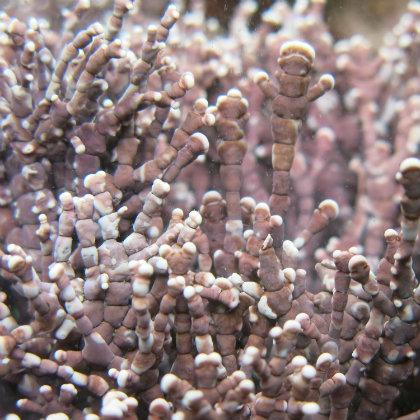 |
Size the main factor in predicting how calcifying organisms will respond to ocean acidification |
New research suggests size is the main factor that predicts how calcifying organisms will respond to ocean acidification. |
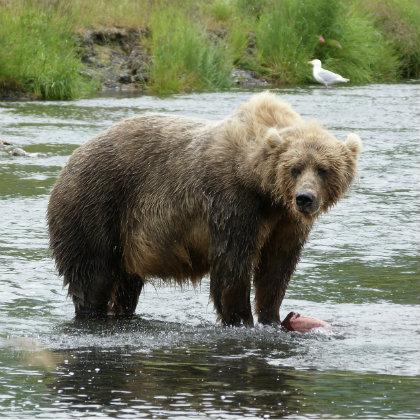 |
Diverse salmon populations enable ‘resource surfing’ bears to eat tons of fish |
Research shows that Kodiak brown bears that sync their stream-to-stream movements to salmon spawning patterns eat longer and more than bears that don’t. |
 |
Deep learning cracks the code of messenger RNAs and protein-coding potential |
Researchers at Oregon State University have used deep learning to decipher which ribonucleic acids have the potential to encode proteins. |
 |
Climate change is the focus of new oral history website from Oregon State University Libraries |
A website focusing on climate change and featuring oral history interviews with a dozen leading figures from OSU is now online. |
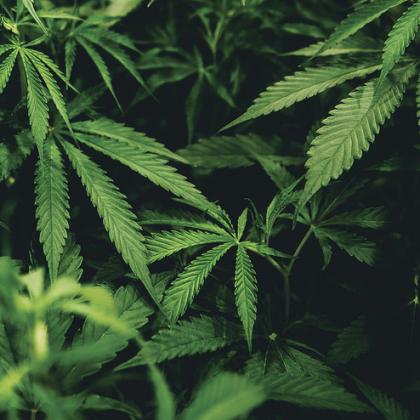 |
Second study finds Oregon college students reporting more marijuana use following legalization |
College students at two large public universities in Oregon are reporting more use of marijuana following the drug’s legalization, including among those who are underage, Oregon State University researchers have found. |
 |
OSU researchers determine why pulsed sparks make for better ignition |
Researchers have learned the mechanisms behind a means of improved ignition, helping to open the door to better performance in combustion systems ranging from car engines to jet propulsion. |
 |
Study: Reducing carbon emissions will limit sea level rise |
A new study demonstrates a clear correlation between cumulative carbon emissions and future sea level rise over time – and the news isn’t good. |
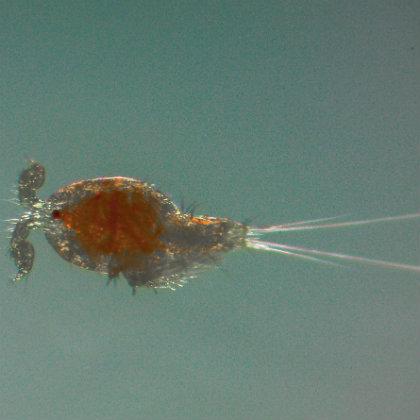 |
New species may arise from rapid mitochondrial evolution |
Genetic research at Oregon State University has shed new light on how isolated populations of the same species evolve toward reproductive incompatibility and thus become separate species. |
 |
Solved protein puzzle opens door to new design for cancer drugs |
Researchers at Oregon State University have solved a longstanding puzzle concerning the design of molecular motors, paving the way toward new cancer therapies. |
 |
Nanofiber-based wound dressings induce production of antimicrobial peptide |
Nanofiber-based wound dressings loaded with vitamin D spur the production of an antimicrobial peptide, a key step forward in the battle against surgical site infections, or SSIs. |
 |
Gonorrhea researchers identify novel route to vaccine, new antibiotic |
Researchers have identified a protein that powers the virulence of the bacteria that causes gonorrhea, opening the possibility of a new target for antibiotics and, even better, a vaccine. |
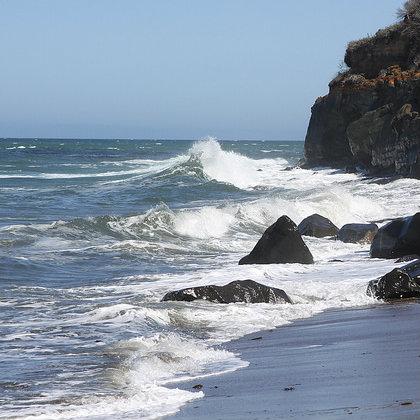 |
OSU-Cascades researcher awarded $2 million for research turning salt water into drinking water |
A researcher at Oregon State University-Cascades will lead a team working on turning salt water into drinking water as part of a $21 million national effort. |
 |
OSU contributions come to fruition with impending China nuclear plant opening |
Thanks in large part to nearly two decades of research, testing and training support from Oregon State University’s College of Engineering, a new age for nuclear power is set to begin July 4. |
 |
OSU is purchasing land north of Waldport to begin PacWave energy test site project |
Oregon State University is purchasing a five-acre parcel along the central Oregon coast that will be the shore-based facility for converting wave energy captured from a test site to be located about seven miles offshore into utility-grid accessible power. |
 |
Scientists believe ‘lost carbon’ during last Ice Age was stored in ocean via physics and dust |
During the last ice age, atmospheric carbon dioxide was about one-third lower than it is today and scientists are uncertain why the distribution of global carbon was different than today. |
 |
Scientists use hydrophone to listen in on methane seeps in ocean, hope next to estimate volume |
A research team has successfully recorded the sound of methane bubbles from the seafloor off the Oregon coast using a hydrophone, opening the door to using acoustics to identify – and perhaps quantify – this important greenhouse gas in the ocean. |
 |
Lessons about a future warmer world using data from the past |
Selected intervals in the past that were as warm or warmer than today can help us understand what the Earth may be like under future global warming. |